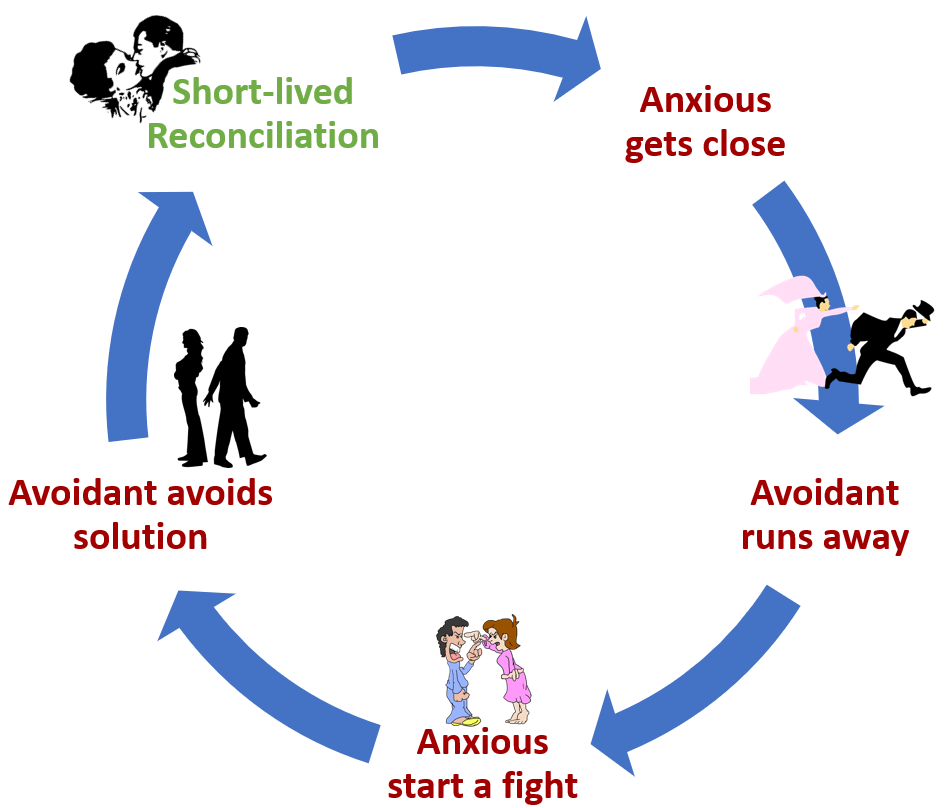
Exploring the stages of the Anxious / Avoidant Trap in Relationships
From early phase to the healing stage, here are a few ways by which the anxious/avoidant trap works in a relationship.
This is the non-win trap between a partner who is seeking connections, and a partner that is running away from growing real connections. This anxious/avoidant trap can be extremely draining for the partners. “Let’s dive into the dreaded Anxious/Avoidant trap. Buckle up because we’re about to unravel the phases of this rollercoaster ride! Some statistics I’ve read said that as many as 80% of couples mirror this dynamic. Wow! No wonder people are frustrated,” wrote Therapist Diane as she explained the anxious/avoidant trap in relationships.
There are three phases in this anxious/avoidant trap – this is very rampant in relationships. Here are the phases explained by the therapist:
Early phase: In the initial phases of the relationship, there are sparks in the relationship. As the avoidant partner usually expresses themselves physically, the sex and intimacy can be electrifying. They are also good in giving compliments, and the anxious partner feels satisfied with the relationship. The anxious part also feels that they have found a good listener.
Middle phase: In the middle phase, the avoidant person starts to pull away from the relationship – they feel that the relationship is in a stable phase and hence they can focus on their career. However, the anxious person sees this as a way that the relationship is not doing well as the avoidant person starts to spend lesser time with the anxious person. This is the phase when conflicts start to happen because th anxious partner puts in efforts to get back to the initial phase of the relationship. They feel that they are too much, while the avoidant partner feels that they are not enough.
Healing stage: This is the phase when they find common grounds to come together. The anxious partner starts to validate themselves and does not depend on the withdrawal behavior of their avoidant partner. The avoidant partner learns to express themselves more and spend more time with the anxious partner.
Also known as the anxious-avoidant attachment cycle, is a common pattern that can emerge in relationships. It involves individuals with contrasting attachment styles, one being anxious and the other avoidant, creating a cycle of interaction characterized by insecurity, mixed signals, and emotional turbulence. Understanding the phases of this trap can shed light on its dynamics and help individuals navigate their relationships more effectively.
- Initial Attraction: In this phase, the anxious and avoidant individuals are drawn to each other due to their subconscious attachment needs. The anxious person may be attracted to the avoidant’s independence and mystery, while the avoidant may feel a sense of excitement or challenge with the anxious person’s emotional intensity. The initial stages of the relationship may be characterized by passion, intensity, and a strong desire for connection.
- Heightened Anxiety: As the relationship progresses, the anxious individual’s need for reassurance, closeness, and emotional availability becomes more pronounced. They may seek constant validation and reassurance from their partner, fearing abandonment or rejection. The avoidant partner, on the other hand, may feel overwhelmed by the demands for closeness and may start to withdraw or create emotional distance. This mismatch in needs leads to heightened anxiety for the anxious person.
- Pursuit and Withdrawal: In this phase, the anxious individual intensifies their pursuit of closeness and reassurance, often through increased communication, seeking validation, and expressing their emotional needs. However, their efforts may trigger the avoidant partner’s discomfort, leading them to withdraw further. The avoidant individual may become emotionally distant, non-responsive, or engage in avoidant behaviors such as prioritizing independence, creating space, or avoiding emotional intimacy.
- Emotional Turmoil: As the anxious person feels rejected or dismissed by the avoidant partner’s withdrawal, they experience heightened emotional turmoil. Their fear of abandonment and rejection intensifies, leading to increased anxiety, self-doubt, and emotional distress. The avoidant person, on the other hand, may feel overwhelmed by the emotional intensity and pressure, further reinforcing their avoidance strategies.
- Cycle of Conflict: The anxious/avoidant trap often results in a cycle of conflict, with repeated patterns of pursuing and withdrawing behaviors. The anxious person’s need for emotional connection clashes with the avoidant person’s fear of engulfment or loss of independence. This cycle perpetuates feelings of insecurity, frustration, and dissatisfaction for both individuals, leading to recurring arguments, misunderstandings, and a sense of emotional instability in the relationship.
Also Read: Kashmir as a Honeymoon Destination: Top reasons why to choose?
Breaking the Anxious/Avoidant Trap: Overcoming the anxious/avoidant trap requires open communication, self-awareness, and a willingness to address attachment patterns. Here are some strategies to consider:
- Developing Self-Awareness: Recognize your own attachment style and how it may contribute to the anxious/avoidant trap. Understand your needs, fears, and triggers in relationships.
- Communication and Empathy: Foster open and honest communication with your partner. Share your feelings, needs, and concerns, and be receptive to your partner’s perspective. Practice empathy and strive to understand each other’s attachment styles.
- Establishing Boundaries: Set healthy boundaries to ensure that both partners’ needs for closeness and independence are respected. Discuss and negotiate these boundaries together.
- Individual and Couples Therapy: Consider seeking individual therapy to work on personal attachment issues and couples therapy to address the relationship dynamics. A therapist can provide guidance, support, and tools to navigate the anxious/avoidant trap effectively.
- Self-Care and Support: Focus on self-care activities that promote emotional well-being, such as practicing mindfulness, engaging in hobbies, or seeking support from friends and loved ones. Develop a strong sense of self and cultivate independence outside of the relationship.
Navigating the anxious

